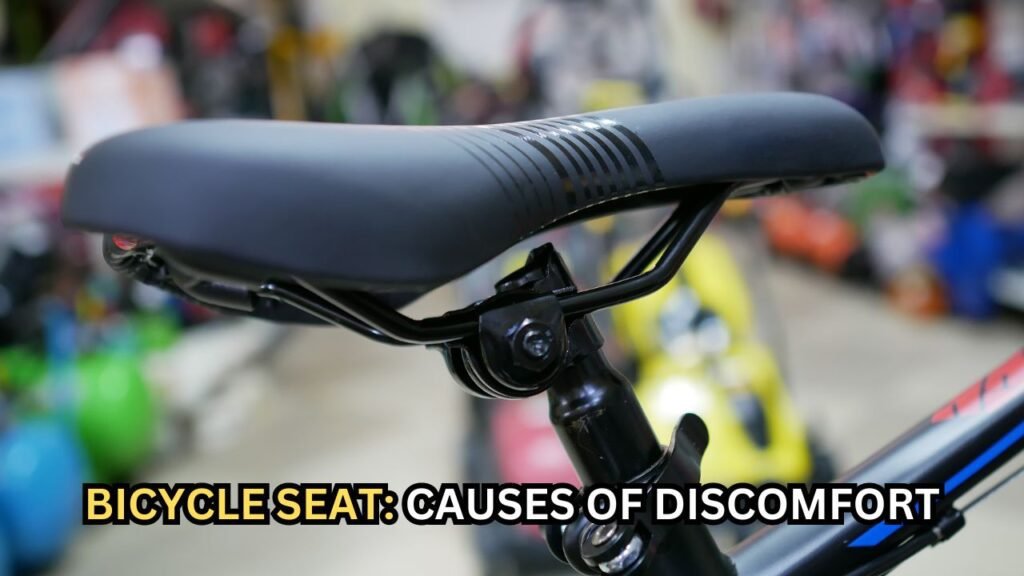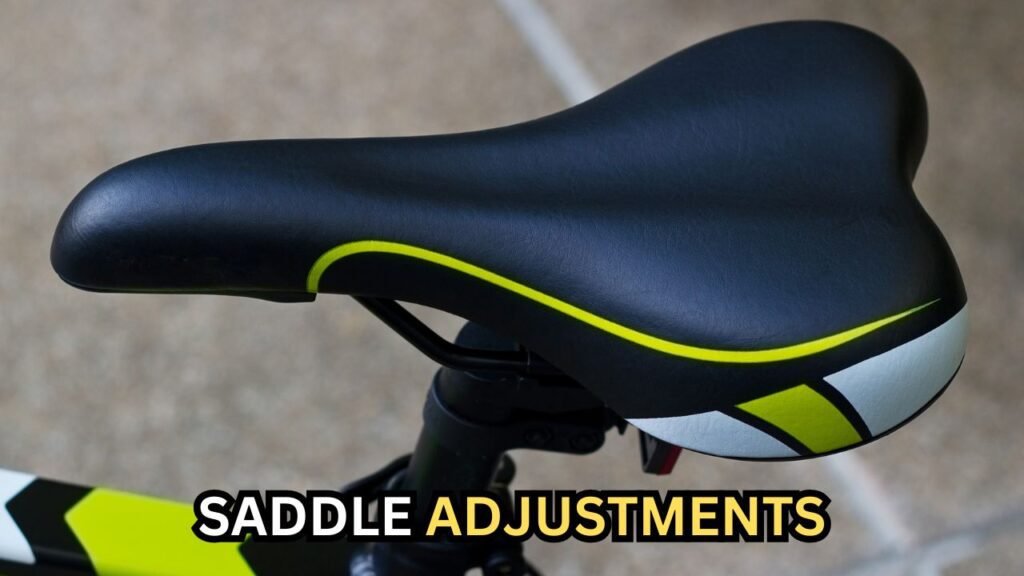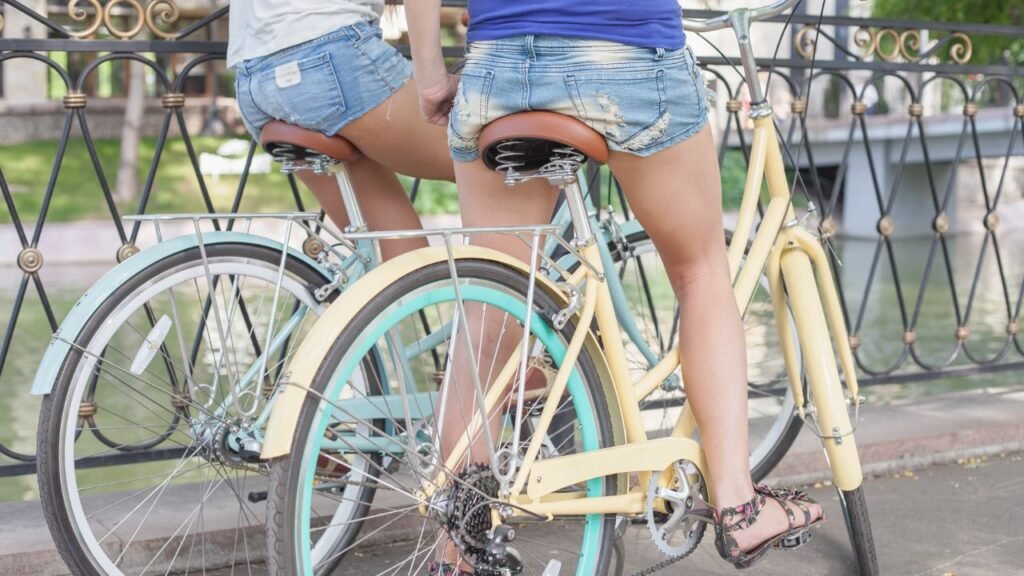Cycling is an excellent form of exercise and a popular mode of transportation, but one of the most common complaints among cyclists is the discomfort caused by the bicycle seat.
Whether you’re a casual rider or a seasoned cyclist, a uncomfortable seat can lead to chafing, soreness, and even more severe issues.
Fortunately, there are several effective ways to make your bicycle seat more comfortable, allowing you to enjoy your rides without the nagging pain and discomfort.
Understanding the Causes of Discomfort

Improper saddle fit:
One of the primary causes of discomfort while cycling is an improperly fitted saddle. If the saddle is too narrow, it can cause excessive pressure on the soft tissues, leading to chafing and soreness.
Conversely, a saddle that is too wide can cause inner thigh discomfort and saddle sores. Additionally, an incorrect saddle tilt can create pressure points and lead to numbness or pain.
Inadequate padding:
While some riders prefer minimalist saddles, inadequate padding can contribute to discomfort, especially on longer rides. The padding helps distribute pressure evenly and reduce the impact on sensitive areas. However, too much padding can also be problematic, as it can lead to excessive compression and reduced blood flow.
Riding position and posture:
Poor riding position and posture can significantly impact comfort levels. An overly aggressive or stretched-out position can put excessive pressure on the perineal area, leading to numbness and discomfort.
Additionally, improper body alignment and core engagement can cause back pain, neck strain, and other issues.
Choosing the Right Saddle

Saddle types:
- Gel saddles: These saddles feature a gel-filled padding that molds to the rider’s shape, providing cushioning and pressure relief. However, gel saddles can be heavier and may break down over time.
- Padded saddles: Traditional padded saddles use foam or memory foam padding for comfort. They are lightweight and widely available in various shapes and sizes.
- Cutout saddles: These saddles feature a central cut-out or channel that relieves pressure on the perineal area, promoting better blood flow and reducing numbness.
- Leather saddles: While initially stiff, high-quality leather saddles can conform to the rider’s shape over time, providing a personalized fit and comfort.
Saddle width and sizing:
Proper saddle width is crucial for comfort and support. A saddle that is too narrow can cause excessive pressure, while a saddle that is too wide can lead to chafing and instability. Saddle width is typically measured in millimeters and should correspond to the rider’s sit bone width (or ischial tuberosity distance).
Gender-specific saddles:
Women’s saddles are often designed with a shorter nose and wider rear section to accommodate anatomical differences and provide better support for the sit bones. Men’s saddles tend to be longer and narrower to alleviate pressure on the perineal area.
Saddle Adjustments

Saddle height and tilt:
- Saddle height: Proper saddle height is essential for optimal power transfer and comfort. A saddle that is too low can cause knee pain and inefficient pedaling, while a saddle that is too high can lead to excessive rocking and discomfort.
- Saddle tilt: The saddle should be level or slightly tilted downward at the nose. An excessive upward tilt can cause pressure on the perineal area, while a downward tilt can lead to sliding forward and discomfort.
Fore-aft position:
The saddle’s fore-aft position (how far forward or back it is positioned) affects the rider’s weight distribution and pedaling mechanics. An improper fore-aft position can cause knee pain, lower back discomfort, or inefficient pedaling.
Seat post suspension:
Suspension seat posts can help absorb road vibrations and reduce discomfort, especially on rough terrain. They incorporate a suspension mechanism that allows for vertical movement and damping, reducing the impact transmitted to the rider’s body.
This information is based on the latest research and recommendations from cycling experts, saddle manufacturers, and biomechanics studies. It provides valuable insights into understanding the causes of discomfort, choosing the right saddle, and making proper adjustments to enhance comfort and performance while cycling.
Padded Cycling Shorts and Chamois

Benefits of padded shorts:
Padded cycling shorts are an essential piece of gear for enhancing comfort on the bike.
The built-in chamois (pronounced “shammy“) is a strategically placed pad that provides cushioning and reduces friction in the sensitive areas that make contact with the saddle.
Here are some key benefits of padded cycling shorts:
- Reduced chafing and saddle sores: The chamois creates a barrier between the rider’s skin and the saddle, minimizing the risk of chafing, abrasions, and saddle sores.
- Improved breathability: High-quality cycling shorts are made with moisture-wicking fabrics that help keep the rider dry and comfortable, preventing bacterial buildup and irritation.
- Increased shock absorption: The padding in the chamois helps absorb vibrations and impacts from the road, reducing fatigue and discomfort during long rides.
Choosing the right chamois:
Not all chamois are created equal. When selecting padded cycling shorts, consider the following factors:
- Thickness and density: Look for a chamois with dense, multi-density foam padding that provides adequate cushioning without feeling bulky or restricting movement.
- Anatomical design: The chamois should be anatomically designed to fit the rider’s gender and body contours, providing targeted padding and support where it’s needed most.
- Material: High-quality chamois typically feature anti-bacterial and moisture-wicking materials like CyTech or Cytech EIT to keep the rider dry and comfortable.
Proper fit and maintenance:
Ensuring the right fit and proper maintenance of padded cycling shorts is crucial for maximizing comfort and hygiene.
- Fit: Cycling shorts should fit snugly without being overly tight or restricting movement. Look for shorts with a compressive fit and minimal seams to reduce chafing.
- Washing: Follow the manufacturer’s instructions for washing padded cycling shorts to ensure the chamois retains its shape and properties. Avoid using fabric softeners, which can clog the pores of the chamois and reduce its effectiveness.
- Replacement: Over time, the chamois will break down and lose its cushioning properties. It’s recommended to replace padded cycling shorts every 6-12 months, depending on usage and wear.
Additional Comfort Measures

Saddle covers and cushions:
While not a long-term solution, saddle covers and cushions can provide temporary relief for riders experiencing discomfort with their current saddle.
These accessories can add extra padding and cushioning, but it’s important to choose high-quality options that won’t slide or bunch up during rides.
Handlebar adjustments:
Proper handlebar positioning can significantly impact overall comfort on the bike. Adjusting the handlebar height, reach, and angle can help alleviate pressure on the hands, shoulders, and lower back.
Consider investing in ergonomic handlebar grips or padded bar tape for additional comfort.
Saddle relief products:
Several products on the market are designed specifically to alleviate pressure and discomfort in the saddle area. These include:
- Saddle cutouts: Some saddles feature a central cutout or channel that relieves pressure on the perineal area, promoting better blood flow and reducing numbness.
- Saddle nose guards: These attachments fit over the nose of the saddle, providing a soft, cushioned barrier to reduce pressure and chafing.
- Chamois creams and lubricants: Anti-friction creams and lubricants can be applied to the chamois or skin to reduce friction and irritation during long rides.
When exploring additional comfort measures, it’s essential to consider the root cause of the discomfort and address it accordingly.
These products can provide temporary relief, but they should not be used as a substitute for properly fitting and adjusting the saddle and other bike components.
FAQs:
How often should I replace my bicycle saddle?
The lifespan of a bicycle saddle can vary greatly depending on factors such as usage frequency, riding conditions, and the quality of the saddle itself.
As a general guideline, it’s recommended to replace your saddle every 1-3 years, or sooner if you notice significant wear or discomfort.
Signs that it’s time to replace your saddle include:
- Excessive wear or cracks in the saddle cover or padding
- Sagging or loss of shape in the padding
- Creaking or loosening of the saddle rails or mounting hardware
- Persistent discomfort or numbness, even after making adjustments
Keep in mind that high-quality saddles from reputable brands tend to have a longer lifespan compared to budget options.
Are gel saddles better for comfort?
Gel saddles have been popular for their promise of enhanced comfort, but opinions are mixed regarding their effectiveness. While the gel padding can provide initial cushioning, some riders find that gel saddles can become uncomfortable over longer rides.
The benefits of gel saddles include:
- Conforming to the rider’s shape for customized support
- Reducing pressure points and vibrations
However, potential drawbacks of gel saddles include:
- Prone to breaking down and deteriorating over time
- Trapping heat and moisture, leading to discomfort
- Added weight compared to other saddle types
Ultimately, whether a gel saddle is better for comfort is a personal preference. Many riders find that well-designed foam or multi-density padded saddles can provide similar or better comfort without the drawbacks of gel.
How do I know if my saddle is the correct width?
Choosing the right saddle width is crucial for comfort and preventing issues like chafing and numbness. The ideal saddle width should match the distance between your sit bones (ischial tuberosity distance).
To determine your sit bone width, you can:
- Use a gel or memory foam pad to measure the impression made by your sit bones
- Visit a bike fitter or shop that offers professional sit bone measurement services
- Refer to sizing guides provided by saddle manufacturers, which often recommend widths based on factors like gender and body measurements
As a general guideline, saddle widths typically range from 125mm to 155mm for women and 135mm to 165mm for men. However, individual fit and preference should take priority over generalizations.
Can I use a saddle cover on top of my existing saddle?
Yes, saddle covers or pads can be used on top of your existing saddle as a temporary solution for enhancing comfort. However, it’s important to choose a high-quality cover that is designed to stay in place and not bunch up or slide during rides.
Saddle covers can provide additional padding and cushioning, but they should not be considered a long-term replacement for a properly fitted saddle. If you find yourself constantly relying on a saddle cover, it may be time to invest in a new saddle that better suits your needs.
When using a saddle cover, ensure that it doesn’t significantly alter the shape or profile of your saddle, as this can affect your riding position and lead to discomfort or injury.
What are the benefits of a suspension seat post?
A suspension seat post is designed to absorb vibrations and shocks from the road, providing an additional layer of comfort for riders. Some key benefits of suspension seat posts include:
- Reducing fatigue and discomfort, especially on rough terrain or long rides
- Minimizing impact and jarring on the rider’s body
- Improving traction and control by allowing the saddle to move with the terrain
- Potential reduction in lower back pain and other discomforts caused by vibrations
Suspension seat posts typically feature a built-in suspension mechanism, such as an elastomer or coil spring, that allows for controlled vertical movement and damping. This helps isolate the rider from harsh impacts and road buzz.
However, suspension seat posts can add weight and complexity to the bike, and may not be necessary for riders who primarily cycle on smooth surfaces or for shorter distances.
How do I properly care for and maintain my padded cycling shorts?
Proper care and maintenance of padded cycling shorts are essential for ensuring their longevity, hygiene, and continued comfort. Here are some tips:
- Follow the manufacturer’s washing instructions carefully, typically using a gentle cycle with mild detergent and avoiding fabric softeners.
- Wash cycling shorts after every ride to remove sweat, bacteria, and other buildup.
- Avoid using bleach or harsh chemicals, as they can break down the chamois padding and fabrics.
- Air dry or tumble dry on a low heat setting to prevent shrinkage or damage to the chamois.
- Consider using a dedicated cycling shorts detergent or chamois cream to help maintain the integrity of the padding.
- Replace cycling shorts every 6-12 months, or sooner if the chamois becomes worn, compacted, or loses its cushioning properties.
- Store cycling shorts in a cool, dry place, avoiding direct sunlight or heat sources that can degrade the materials.
By properly caring for your padded cycling shorts, you can extend their lifespan and maintain optimal comfort and hygiene during your rides.
Conclusion:
Achieving a comfortable ride on your bicycle is crucial for enjoying the experience and avoiding potential injuries. By understanding the causes of discomfort, selecting the right saddle, making proper adjustments, investing in quality padded cycling shorts, and exploring additional comfort measures, you can transform your cycling experience.
Remember, comfort is personal, so don’t hesitate to experiment and find the combination that works best for you.

